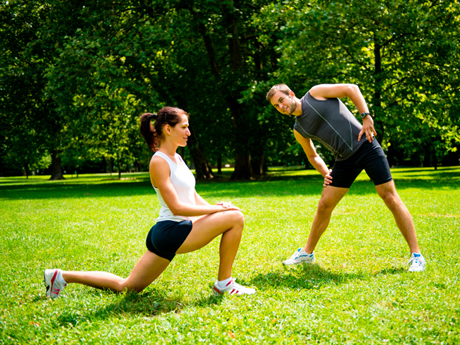 BY NIAMH DAVIS: The running season is upon us; the triathlons have begun and different types of competitions are popping up everywhere.
BY NIAMH DAVIS: The running season is upon us; the triathlons have begun and different types of competitions are popping up everywhere.
 Whether it’s a 5K, a 10K or a 15K, whatever it may be, it is tough on the body and you need to know how to look after any aches, niggles and pain.
Whether it’s a 5K, a 10K or a 15K, whatever it may be, it is tough on the body and you need to know how to look after any aches, niggles and pain.
Studies have shown that long term runners who do not do adequate types of warm up, cool down or manage the injuries that accumulate over the miles, suffer serious consequences such as surgery for knee replacements, osteoporosis and irreversible degeneration of cartilage in the joints.
It’s not all gloom and doom though.
Here are a few common running injuries that can be managed simply with a bit of know-how.
The dreaded shin splints: This term is over used and given to any runner that gets a bit of pain in the shin.
True shin splints are not so common. More likely the pain is just a tight tibialis anterior (the muscle on the outside of the shin bone) and will only take one session with a sports therapist or physio to have it rubbed out which will ease the pain.
When it comes to the joints that get the most impact of your run, (hips, knees and ankles), it’s important to manage any pain you may feel.
It’s safe to use ice on most areas of pain for 10-15 mins every other hour to reduce any swelling. This may cause slight temporary stiffness in the joint but this will go back to normal soon after the area warms up.
Deep heat or freeze gel are also good alternative options that can work well for some people on joints and painful spots.
Lower back pain can be caused by a lot of different things. It is very rare that two people have the same pain for the same reason so it is important to take a few days off and get it looked at by a professional.
For those who are not suffering with specific pain it is still important to follow some basic steps to maintain muscles and joints.
Everyone is different and if you are planning to start running long term then it is a good idea to go to your local sports therapist or a personal trainer experienced in running to help you set up goals and create a personalised warm up and mobility plan.
If at any stage during your training plan or a competition you feel a sharp pain or feel like you have injured yourself then stop and get it seen to as soon as possible.
In my experience a warm up before a run should not consist of static stretching (holding one pose for 30-40 seconds) it should be full of different movements that mimic the action you’re going to be doing during the race.
Start with warming the joints, roll out your joints starting from the ankles all the way up to your neck and add a few light bounces on the spot to prepare your joints for the next stage (2-3 minutes in total).
Start to increase your heart rate; exercises like high knees, heels to bum and walking lunges and finish up with a brisk walk or a light jog.
Do not skimp on the warm up, it will help prevent injuries so do spend time with it and find what works for you.
Do the static stretches and use a foam roller on your legs after you have completed the run.
Time spent on a cool down, as well as a sports massage within 48 hours after a race or a tough training session, will prevent muscle soreness over the next few days.
If, for any reason, you can’t get for a massage then a nice warm bath with Epsom salts and another good stretch before bed is the next best thing.
Training is about getting to know your limits and improving constantly so remember to keep adapting your maintenance to suit the type and amount of exercise that you are doing.
Prevention is key and if in doubt don’t be afraid to ask other people’s advice and seek information from someone qualified and experienced in the field.
Columnist Niamh Davis is a neuro-musclar physical therapist based at Fit-Hub, Mountain Top, Letterkenny.
Her Facebook page is here:
https://www.facebook.com/Neuromuscular11/?ref=ts&fref=ts








